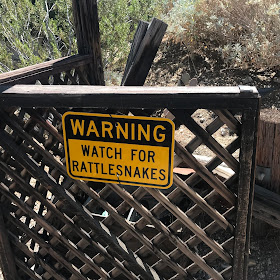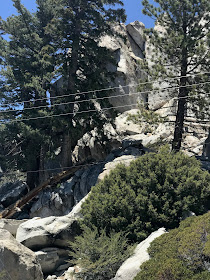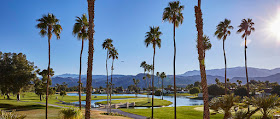 |
| Cabot Yerxa. Photo courtesy of Cabot's Pueblo Museum. |
He was born to a serially successful merchant and his wife - a Cabot from the less affluent side of that vaunted Boston family - at their trading post on a Lakota Sioux reservation in North Dakota in 1883. At the age of 6 he began working for his father and by 14 he was supervising 20 people in the family department store. When gold was discovered in the Klondike, he used his earnings to buy 50,000 cigars plus mining equipment which he sold to the miners. That was in addition to organizing a stage line, living with an Inupiat family and compiling an Eskimo dictionary which he sold to the Smithsonian Institute in 1909 for 12 cents a word.
Eventually Cabot made his way to Europe where he studied art for a year at the Julian Academie in Paris. After the Spanish-American War, the Yerxas moved to Cuba where Cabot developed a mail order cigar business. He served in the Army in France during World War I.
 |
| Eagle Nest, Miracle Hill |
Cabot had also accumulated a wife and a son, who did not care for life in the hot, dry, lonely desert with a husband who was always away accompanied by a burro he seemed to care for more than either of them.
Cabot saw a great future for Desert Hot Springs with the health-giving hot mineral water attracting people internationally and the natural cool water spring providing the water to turn the area into a garden.
At the age of 58 he began building his castle out of what he could scavenge - bits of metal, wood, broken glass, adobe bricks, even broken tools. The size of the rooms was limited by the length of the wood he could find, from railroad ties and telephone poles to twigs. Creativity solved many a challenge.
A work in progress until his death at 81, the result is a Hopi inspired four-story, 5,000-square-foot pueblo with 35 rooms, 150 windows, 65 doors, 18 openings to the outside and 30 different roof levels. Cabot built it on the side of a hill on an East-West axis for optimum air flow, insulating it from extremes of temperature. A series of ventilation shafts keep the interior cool, sending hot air up and out.
Cabot believed symmetry suppressed the human spirit and in the Venturi effect, that the smaller the path, the faster hot air leaves. I can't speak for the symmetry issue but the Venturi effect works. It was much cooler inside than the 110-degree temperature outside.
 |
| Still a problem. |
Between 1946 and '47 electricity came to the Pueblo. Now power is generated by solar panels on an adjacent hill.
 |
| Portia Graham and Cabot Yerxa. Photo courtesy of Cabot's Pueblo Museum. |
In the room given to Cabot's biography, "Cody," the mounted brown bear, was a gift from Nome for his museum. Cabot's favorite room was the kitchen but Portia truly loved the blue bathtub he bought and installed for her and the studio where she could paint and study in peace.
Over the years, Cabot hosted famous visitors; John Barrymore, Tennessee Williams and Clark Gable were a few who spent time with him at the Pueblo.
 |
| Ah-Ah Ota, two-faced white man |
Portia left after Cabot's death and the Pueblo fell into disrepair, much of its contents looted. Just as bulldozers were about to level it, longtime friend Cole Eyaured stepped in, faced down the machines and bought it. Cabot Yerxa had been such a popular benefactor to Desert Hot Springs, much of what had been taken was returned.
A cool idea
Another Coachella Valley visionary is responsible for the Palm Springs Tramway. It began the moment in 1935 when electrical engineer Francis Crocker was on a hike, wiped his sweating brow and wished he could go "up there where it's nice and cool."
"There" was the snow capped peak of San Jacinto Mountain, at an altitude of 10,834 feet.
O. Earl Coffman, area pioneer and co-manager of the Palm Springs Desert Inn, thought it would be nice, too, and a plan was born for what would be called Crocker's Folly, a tramway up the steep slopes of Chino Canyon.
A governor who did not favor the enterprise and World War II put their dream on hold, but it was sparked again in 1945 when the governor agreed and established the San Jacinto Winter Park Authority, naming Coffman the first chairman and Crocker his secretary. By 1950, engineers were working to solve the challenges or road and tower construction. Private revenue bonds raised $8.5 million, but the Korean War caused another delay.
In the end, no public money was used for construction or operation and the 35-year revenue bonds were paid off in 1996. Helicopters were used to build four of the five towers in 26 months, flying 23,000 missions to haul men and materials for the tram's support and the 35,000 square-foot Mountain Station.
 |
| Francis Crocker (right) takes over narration on the Palm Springs Aerial Tramway, which he was known to do until his death. Photo courtesy of The PalmlSprings Historical Society. |
After spending the morning at the Pueblo in the Valley at 110-degree temps, I was good and ready for some of that cool. Tickets come with a time slot and you wait around until yours arrives. Then come the Disney-style accordion lines until it is your turn to enter the tram which is different from any other I have ever encountered.
The floor turns, making two revolutions during the journey. It is unsettling at first but it does allow riders to see the view from all sides. The trick is to let a steadying hand slide as the floor revolves.
 |
| View from the top. |
The only problem I encountered with the Palm Springs Aerial Tramway was transportation. No trouble getting an Uber to the lower level, but after 45 minutes of unsuccessfully trying to get one back, I will be eternally grateful to the young hiker who let me share her prearranged cab back to Palm Springs and Desert Springs.
The kindness of strangers never ceases to delight me.
#satwvisitPalmSprings










































